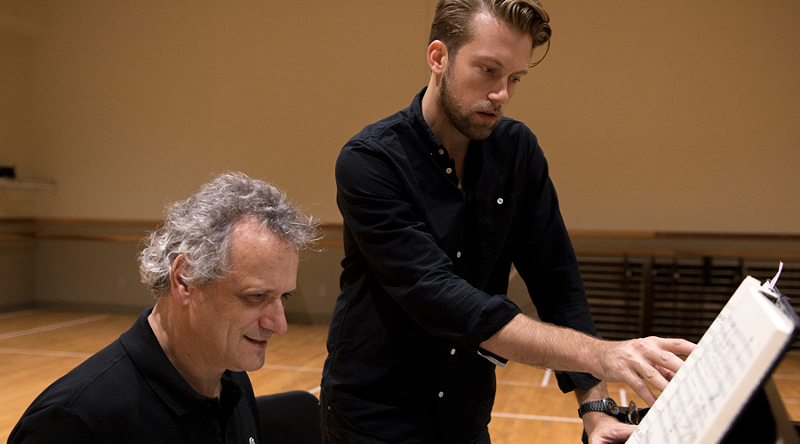The Cincinnati Symphony Orchestra’s three-year Pelléas Trilogy collaboration with director and production designer James Darrah concludes this weekend with performances of Claude Debussy’s opera Pelléas et Mélisande.
Two years ago, this trilogy — three separate compositions based on Maurice Maeterlinck’s 1893 French-language Symbolist play — began with Arnold Schoenberg’s tone poem. Last year featured Gabriel Fauré’s incidental music, originally intended to be performed with the play. Now comes Debussy’s opera, which the CSO is presenting with the Cincinnati Opera. It predates the other two by having had its debut in 1902.
This work occupies a special place for CSO music director Louis Langrée. “It’s like people you have a special chemistry with,” he says. “I deeply love every note, every phrase and text, and the silence.”
Debussy was determined that his music not overwhelm the text, writing that “in opera, there is always too much singing.” Langrée agrees, saying he’s asking the singers to prepare by speaking the text first, then speak it in Debussy’s rhythms and then finally to sing it. “The music isn’t a cane to help them,” he says. “It’s having the natural expression of the singing.”
But don’t come expecting bravura arias or grand choruses. Langrée wants audiences to come to performances as they would for a play. “I even feel that if you leave thinking, ‘Oh, this singer has such a beautiful voice,’ it’s wrong. Something will be missing.”
Langrée acknowledges that first-time listeners can find Pelléas a challenge, but he insists that the French opera’s ambiguity will draw them in. “It’s not a traditional opera with a linear plot, and it’s not entertainment. It’s about lost souls searching for light. It’s about hope.”
Loss is certainly a major theme for all of the characters. In the first act, Mélisande is lost when Prince Golaud, separated from his hunting party, finds her. He marries her without knowing who she is. His half-brother Pelléas and Mélisande forge a relationship, but are they really lovers?
As a composer, Debussy sets the text as people would speak. And he transforms natural settings — a forest, a cave, a stream — into dreamlike soundscapes.
Naomi O’Connell, the mezzo who sings Mélisande, performed the role in the play staged for last year’s Pelléas presentation. “She’s an actress who sings and a singer who acts, and that’s just what I want,” Langrée says. Baritones Phillip Addis and Brian Mulligan take on Pelléas and Golaud, respectively.
Darrah returns for this final installment, but Langrée believes staging should be minimal — it’s all about the words. “What the characters are saying to each other, what they’re sharing, is what’s important,” Langrée says. “It doesn’t need movement to distract you.” Referring to the famous scene in which Pelléas rhapsodizes about Mélisande’s hair, Langrée says the sensuality isn’t in the length of the hair. “This isn’t sponsored by L’Oréal. It’s symbolism! If the expression is right, there is nothing to do, there is nothing to explain.
“I’m eager to see how far we can go with this piece, which needs a lot of individual attention and collective care,” he continues.
Playing Schoenberg’s and Fauré’s musical settings for Pelléas provided the CSO musicians with a basis on which to work with Debussy’s score, which is not only different from theirs but also from his other work. Debussy’s opera should be a fitting culmination to the trilogy, combining theater and music. It is billed as a lyric drama in five acts and twelve tableaux.
Langrée advises concertgoers to immerse themselves in the musical language and the poetic one, which he says are actually the same. “If there is poetry, then there’s music. The music is very precise; once you’re sensitive to it, you’re there. The beginning phrase is like once upon a time. It’s the immersed part of the iceberg.”
PELLÉAS ET MÉLISANDE will be performed 8 p.m. Friday and Saturday at Music Hall. Tickets/more info: cincinnatisymphony.org







